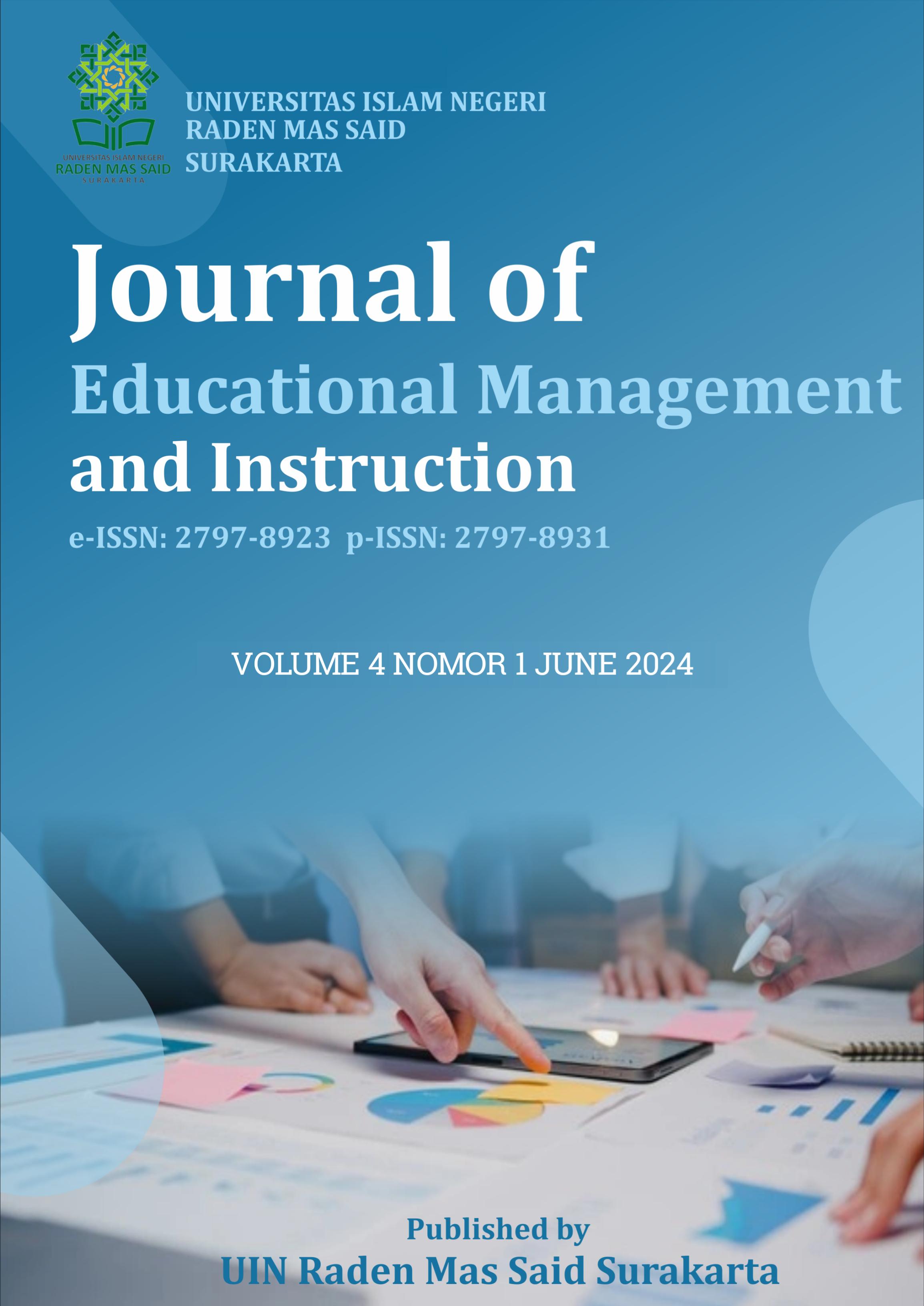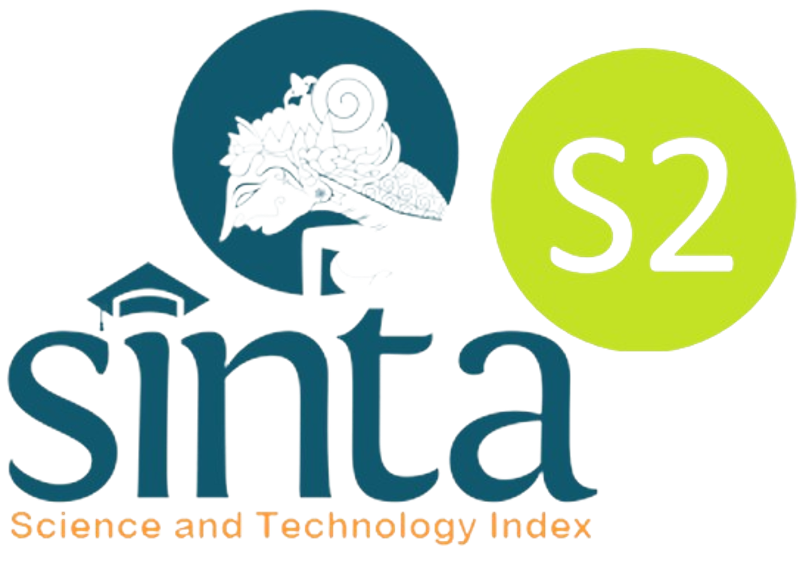The impact of technology-based learning media on students’ interests in Christian religious education
DOI:
https://doi.org/10.22515/jemin.v4i1.9628Keywords:
Christian Religious Education, Students’ Interest in Learning, Technology-based Learning MediaAbstract
The increasing role of technology in education has prompted an examination of its effects on student learning interest. This study aimed to assess the impact of technology-based learning media on students' interest in Christian Religious Education. The research utilized an experimental design with a pretest-posttest control group. The sample consisted of 60 students from high school of Tunas Karya, Kelapa Gading, Jakarta Indonesia, equally divided into control and treatment groups. Data were collected using pre- and post-treatment interest tests. Data analysis was conducted using analysis of variance. The results revealed that technology-based learning media significantly enhanced students' interest in learning Christian Religious Education. The findings suggest that integrating technology-based learning media into the curriculum can effectively boost students' engagement and interest in the subject. These results have important theoretical implications, highlighting the potential of technology in educational settings, and practical implications for educators seeking to improve student engagement in religious education.
Downloads
References
Arifianto, Y. A., Triposa, R., & Saptorini, S. (2021). Christian perspective on the tolerance of Christian religious education teachers and students in the era of disruption. KURIOS (Jurnal Teologi Dan Pendidikan Agama Kristen), 7(2), 381-391. https://doi.org/10.30995/kur.v7i2.295
Barneva, R. P., Gelsomini, F., Kanev, K., & Bottoni, P. (2018). Tangible technology-enhanced learning for improvement of student collaboration. Journal of Educational Technology Systems, 46(3), 284-302. https://doi.org/10.1177/0047239517736875
Brown, M., & Ellis, A. (2023). The role of technology in modern education. Educational Technology & Society, 26(1), 99-110. https://doi.org/10.1177/2042753023112345.
Brown, A., & Green, T. (2023). Digital tools and student motivation. Educational Technology Research and Development, 71(2), 250-265. https://doi.org/10.1007/s11423-022-10092-5
Davis, H., & Johnson, E. (2023). Innovations in religious education. Journal of Religious Studies, 12(2), 180-195. https://doi.org/10.1080/073803312212345
Deci, E. L., & Ryan, R. M. (2000). The "what" and "why" of goal pursuits: Human needs and the self-determination of behavior. Psychological Inquiry, 11(4), 227-268. https://doi.org/10.1207/S15327965PLI1104_01
Evimalinda, R., Situmorang, E. L., Butarbutar, R. D., & Ditakristi, A. H. V. (2022, July). The role of christian religious education teachers in building student’s 6c skills in the era 4.0. In International Conference on Theology, Humanities, and Christian Education (ICONTHCE 2021) (pp. 192-196). Atlantis Press. https://www.atlantis-press.com/proceedings/iconthce-21/125975622
Fernández-Gutiérrez, M., Gimenez, G., & Calero, J. (2020). Is the use of ICT in education leading to higher student outcomes? Analysis from the Spanish Autonomous Communities. Computers & Education, 157, 103969. https://doi.org/10.1016/j.compedu.2020.103969
Field, A. (2018). Discovering statistics using IBM SPSS statistics (5th ed.). Sage Publications.
Green, S., & Lopez, M. (2022). Enhancing student engagement through digital media. Journal of Digital Learning, 15(3), 245-260. https://doi.org/10.1007/s40692-022-00145-7.
Handley, H. (2023). Best Practices for Using Online Interactive Whiteboards. The journal of applied instructional design, 12(4), 57-71. https://doi.org/10.59668/806.12877
Horowski, J. (2020). Christian religious education and the development of moral virtues: a neo-Thomistic approach. British Journal of Religious Education, 42(4), 447-458. https://doi.org/10.1080/01416200.2020.1752618
Johnson, R., & Walker, H. (2023). Challenges in religious education: Engaging the disengaged. International Journal of Educational Research, 98, 120-130. https://doi.org/10.1016/j.ijer.2022.101955
Lee, H., Kwon, S., & Kim, J. (2022). Interactive learning platforms and student engagement. Journal of Educational Psychology, 114(3), 345-360. https://doi.org/10.1037/edu0000620
Luo, Y., Han, X., & Zhang, C. (2024). Prediction of learning outcomes with a machine learning algorithm based on online learning behavior data in blended courses. Asia Pacific Education Review, 25(2), 267-285. https://doi.org/10.1007/s12564-022-09749-6
Miller, L., & Kim, S. (2022). Christian education: Foundations and practice. Journal of Religious Education, 70(1), 45-59. https://doi.org/10.1007/s40839-021-00156-8
Minamatov, Y. E. O. G. L., & Nasirdinova, M. H. Q. (2022). Application of ICT in education and teaching technologies. Scientific progress, 3(4), 738-740. https://cyberleninka.ru/article/n/application-of-ict-in-education-and-teaching-technologies
Nugroho, A., Andriyanti, E., Widodo, P., & Mutiaraningrum, I. (2024). Students’ appraisals post-ChatGPT use: Students’ narrative after using ChatGPT for writing. Innovations in Education and Teaching International, 1-13. https://doi.org/10.1080/14703297.2024.2319184
OECD. (2022). The impact of digital technology on education. Retrieved from https://www.oecd.org/education/digital-technology-education.htm.
Olena, P., Dariia, P., Hrechanyk, N., Kateryna, Y., & Serhii, N. (2022). ICT-oriented training of future HEI teachers: a forecast of educational trends 2022-2024. International Journal of Computer Science & Network Security, 22(4), 387-393. https://doi.org/10.22937/IJCSNS.2022.22.4.45
Othman, W., Makrakis, V., Kostoulas-Makrakis, N., Hamidon, Z., Keat, O. C., Abdullah, M. L., ... & Mat, H. (2024). Predictors of motivation and barriers to ICT-enabling education for sustainability. Sustainability, 16(2), 749. https://doi.org/10.3390/su16020749
Patel, R., & Jones, A. (2023). Virtual learning environments in education. Journal of Educational Technology, 34(1), 87-102. https://doi.org/10.1007/s10956-023-09987-3
Polinkevych, O., & Kuzmak, O. (2023). The quality of distance education with ict: simulation of the ukrainian scenario. Journal of Information Technologies in Education (ITE), (54), 52-67. https://doi.org/10.14308/ite000775
Prasetiawati, P. (2022). Christian Religious Education, Null Curriculum, Learning Strategies, and Inclusiveness in Indonesia. QALAMUNA: Jurnal Pendidikan, Sosial, Dan Agama, 14(1), 207-224. https://doi.org/10.37680/qalamuna.v14i1.3942
Retnaningsih, W., Nugroho, A., Van, D. T. H., & Al Amin, N. H. (2022). Booming the Vocabulary Acquisition by Using Flipped Classroom on EFL Learners’ PPA (Performance, Perception and Acceptance). Voices of English Language Education Society, 6(2), 325–339. https://doi.org/10.29408/veles.v6i2.6107
Schunk, D. H., Pintrich, P. R., & Meece, J. L. (2008). Motivation in education: Theory, research, and applications (3rd ed.). Pearson/Merrill Prentice Hall.
Smith, J., & Williams, K. (2022). Innovative teaching in religious education. Journal of Teaching and Learning, 15(4), 211-226. https://doi.org/10.14434/jotlt.v15i4.31787
Sukatman, K., & Damanik, P. I. (2024). Challenges of Indonesian Christian Religious Education in the Industrial Era 4.0. International Perspectives in Christian Education and Philosophy, 1(2), 62-70. https://doi.org/10.61132/ipcep.v1i2.32
Thompson, P., & White, D. (2022). Multimedia in religious education. Journal of Religious Education, 69(2), 99-112. doi:10.1007/s40839-021-00142-0.
UNESCO. (2023). The role of ICT in education. Retrieved from https://en.unesco.org/themes/ict-education.
Widjaja, F. I., Tjasmadi, M. P., Pakpahan, G. K., Simanjuntak, H., & Boiliu, F. M. (2022, July). The role of christian religious education as a Mission Development in 4.0 Era. In International Conference on Theology, Humanities, and Christian Education (ICONTHCE 2021) (pp. 187-191). Atlantis Press. https://www.atlantis-press.com/proceedings/iconthce-21/125975637
Downloads
Submitted
Accepted
Published
How to Cite
Issue
Section
License
Copyright (c) 2024 Daulat Marulitua Tambunan, Ferdinand Iskandar

This work is licensed under a Creative Commons Attribution-NonCommercial 4.0 International License.
Copyright
Copyright aims to protect the specific way the article has been written to describe an experiment and the results. Journal of Educational Management and Instruction is committed to its authors to protect and defend their work and their reputation and takes allegations of infringement, plagiarism, ethical disputes, and fraud very seriously. Automotive Experiences is published under the terms of the Attribution-NonCommercial 4.0 International (CC BY-NC 4.0). Authors retain copyright and grant the journal right of first publication (online and print) with the work simultaneously. We use the restrictive license (non-commercial) as follows:
BY (attribution): Users are allowed to share, distribute and redistribute the published article in any medium or format, with an identification of the authors and its initial publication in this journal. Authors are encouraged to post and distribute their articles immediately after publication (e.g., institutional or public repositories, personal websites). Authors are allowed to enter into additional contractual arrangements for the non-exclusive distribution of the published and an acknowledgment of its initial publication in this journal.
NC (non-commercial): Users are not allowed to use the article commercially without the permission of the authors. Authors agree explicitly that the published article is indexed worldwide in databases, repositories and indexation services, even if these services operate on a commercial basis. Authors grant Journal of Educational Management and Instruction explicit the right to include the published articles in databases, repositories and indexation services.
License
License to Publish
The non-commercial use of the article will be governed by the Attribution-NonCommercial 4.0 International (CC BY-NC 4.0). The author hereby grants Journal of Educational Management and Instruction an exclusive publishing and distribution license in the manuscript include tables, illustrations or other material submitted for publication as part of the manuscript (the “Articleâ€) in print, electronic and all other media (whether now known or later developed), in any form, in all languages, throughout the world, for the full term of copyright, and the right to license others to do the same, effective when the article is accepted for publication. This license includes the right to enforce the rights granted hereunder against third parties.
Author's Warranties
The author warrants that the article is original, written by stated author/s, has not been published before, contains no unlawful statements, does not infringe the rights of others, is subject to copyright that is vested exclusively in the author and free of any third party rights, and that any necessary written permissions to quote from other sources have been obtained by the author(s).
User Rights
Under the Creative Commons Attribution-Non Commercial 4.0 International (CC BY-NC 4.0) license, the author(s) and users are free to share (copy and redistribute the material in any medium or format) and adapt (remix, transform, and build upon the material). Users must give appropriate credit, provide a link to the license, and indicate if changes were made.
Rights of Authors
Authors retain the following rights:
- Copyright, and other proprietary rights relating to the article, such as patent rights,
- The right to use the substance of the article in future own works, including lectures and books,
- The right to reproduce the article for own purposes, provided the copies are not offered for sale, and
- The right to self-archive the article.
Co-authorship
If the article was prepared jointly with other authors, the signatory of this form warrants that he/she has been authorized by all co-authors to sign this agreement on their behalf, and agrees to inform his/her co-authors of the terms of this agreement.

























